Every spring, the first signs of life in my mulch (and everywhere else in my garden and neighborhood) are these ubiquitous weeds.
You probably have them too. They invade lawns, landscapes, parkways, parking lots, drainage ditches, and all nooks and crannies when the weather is cool and damp.
In climates where winters are mild, they start popping up in November or December if there have been some early rains. They usually appear in neglected areas and it doesn’t take long for a few plants to overrun a plot.
With deep woody taproots and a fast growing habit, they’re often considered invasive… and no, I’m not talking fennel or dandelions.
Common mallow is a much maligned weed to gardeners who feel the same disdain for other unwanted plants in their yards. (After all, a weed is usually a matter of opinion.)
But did you know this omnipresent weed is an edible and medicinal plant?
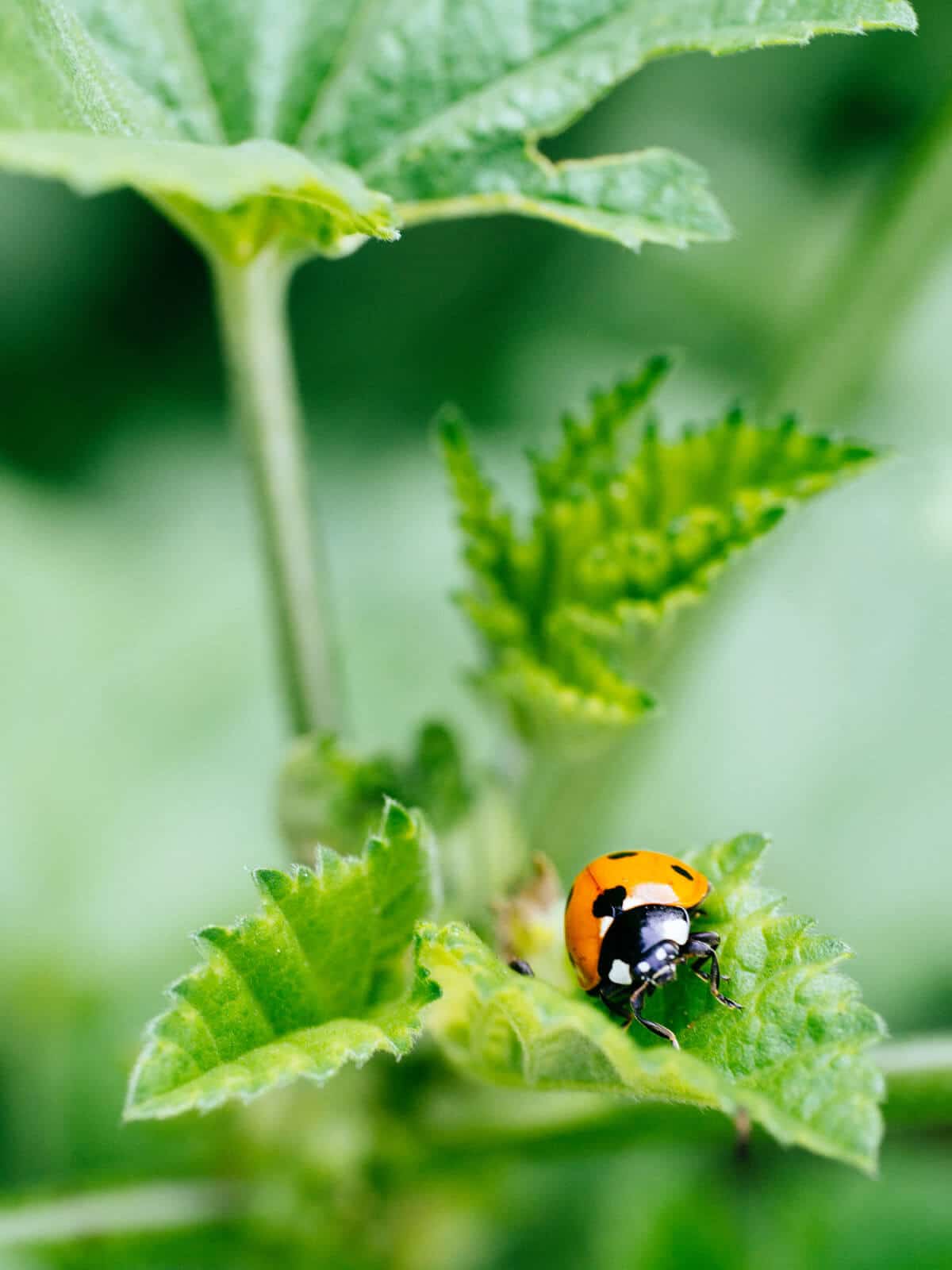
What is mallow weed?
Common mallow (Malva neglecta—how appropriately named) and little mallow (Malva parviflora) belong to the same family of plants as marshmallow and hibiscus.
(Speaking of marshmallow, the confection eaten today was originally made from the sap of the roots of mallow grown in marshes, hence the name. Though candy makers now use gelatin in place of the sap, the name has stuck since the early 1800s when it was introduced to France.)
The plant can be an annual, winter annual, or biennial, and is easily recognized by its geranium-like leaves that have five or seven lobes. Some have deeper lobes while others are nearly round.
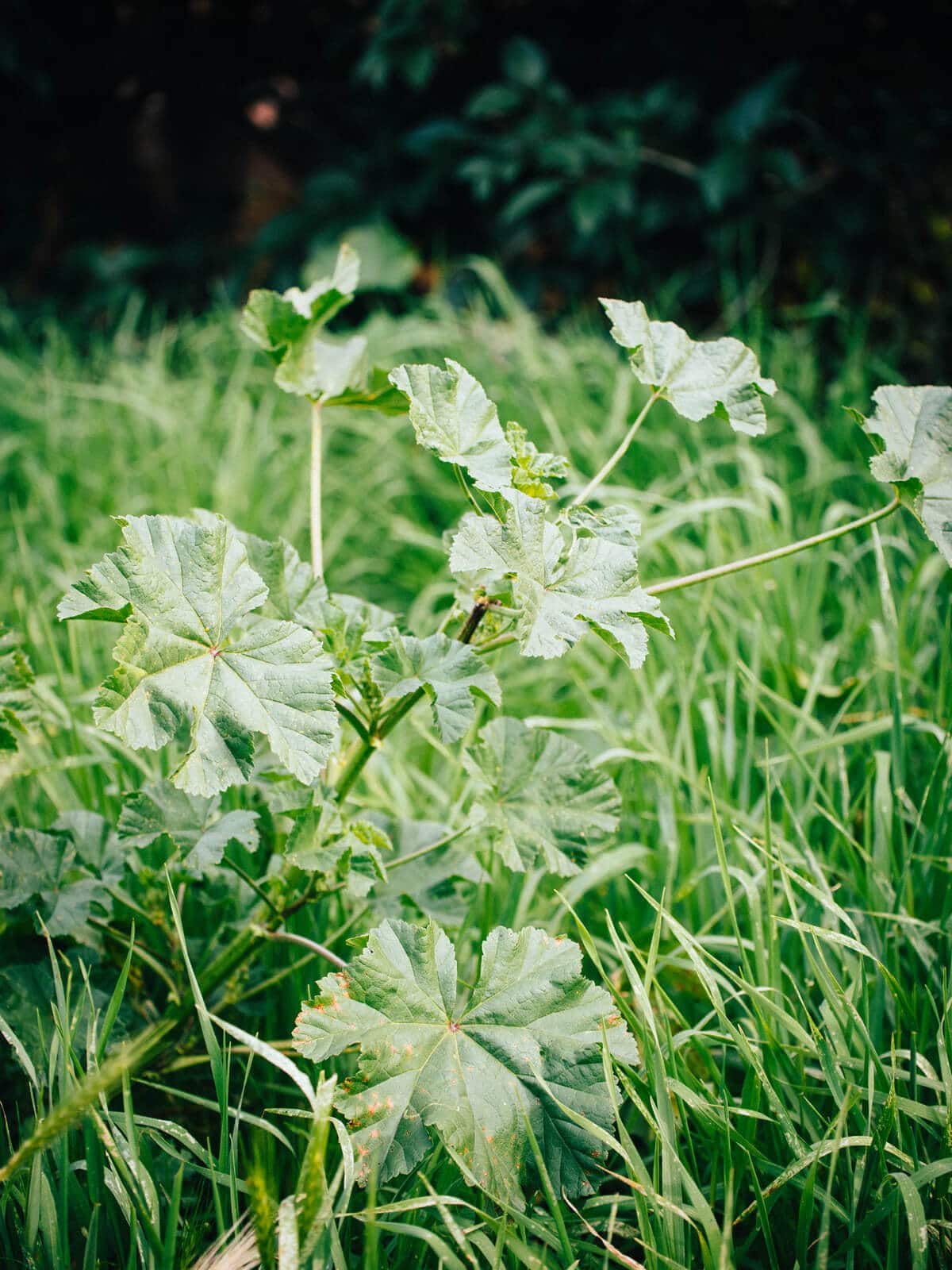
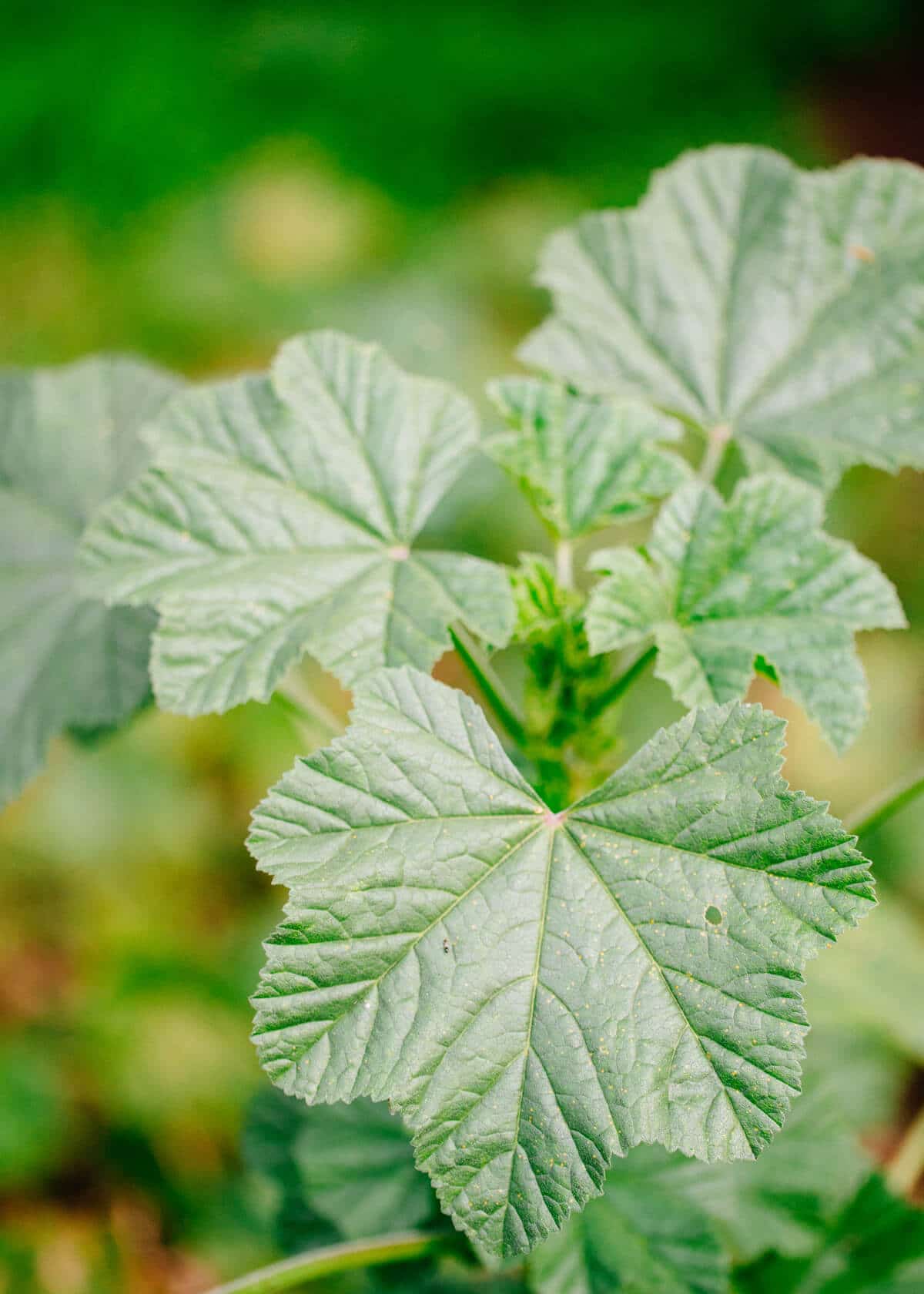
Its flowers seem small and drab compared to its dramatic display of leaves, which look their best in winter and spring when the ground is moist.
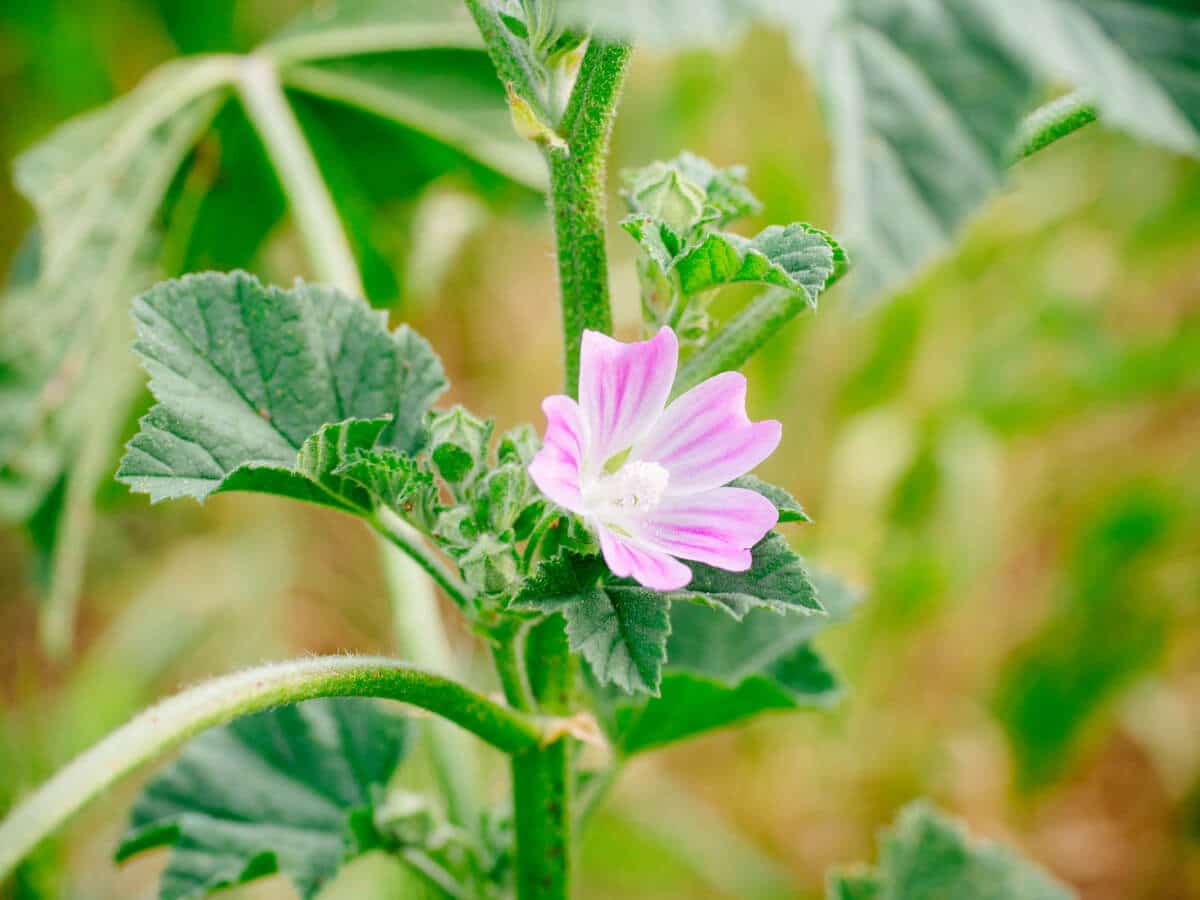

Mallow is sometimes called cheeseweed, and if you look closely at its fruiting head, you’ll see that it resembles a miniature wheel of cheese with wedge-shaped sections.
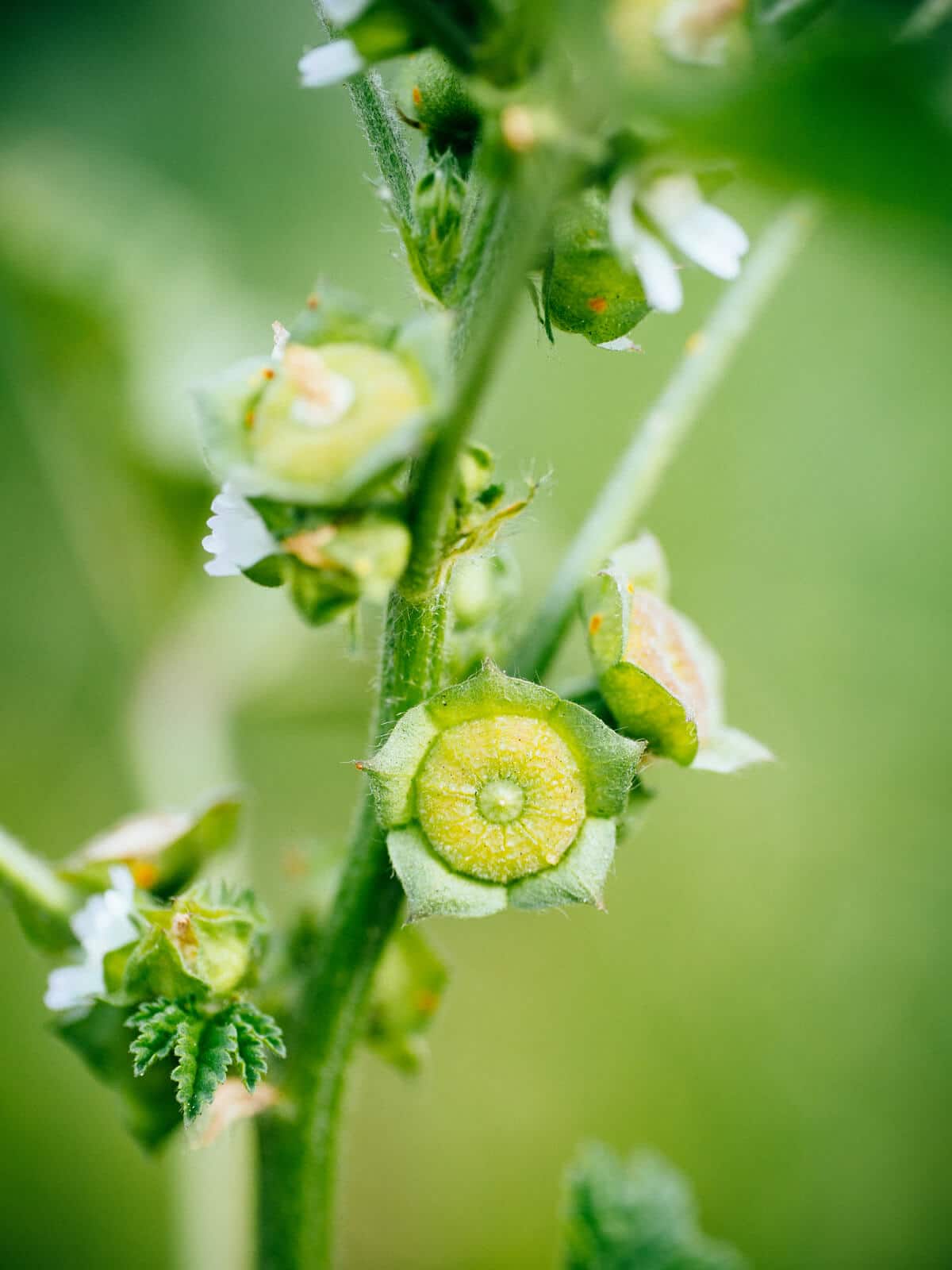
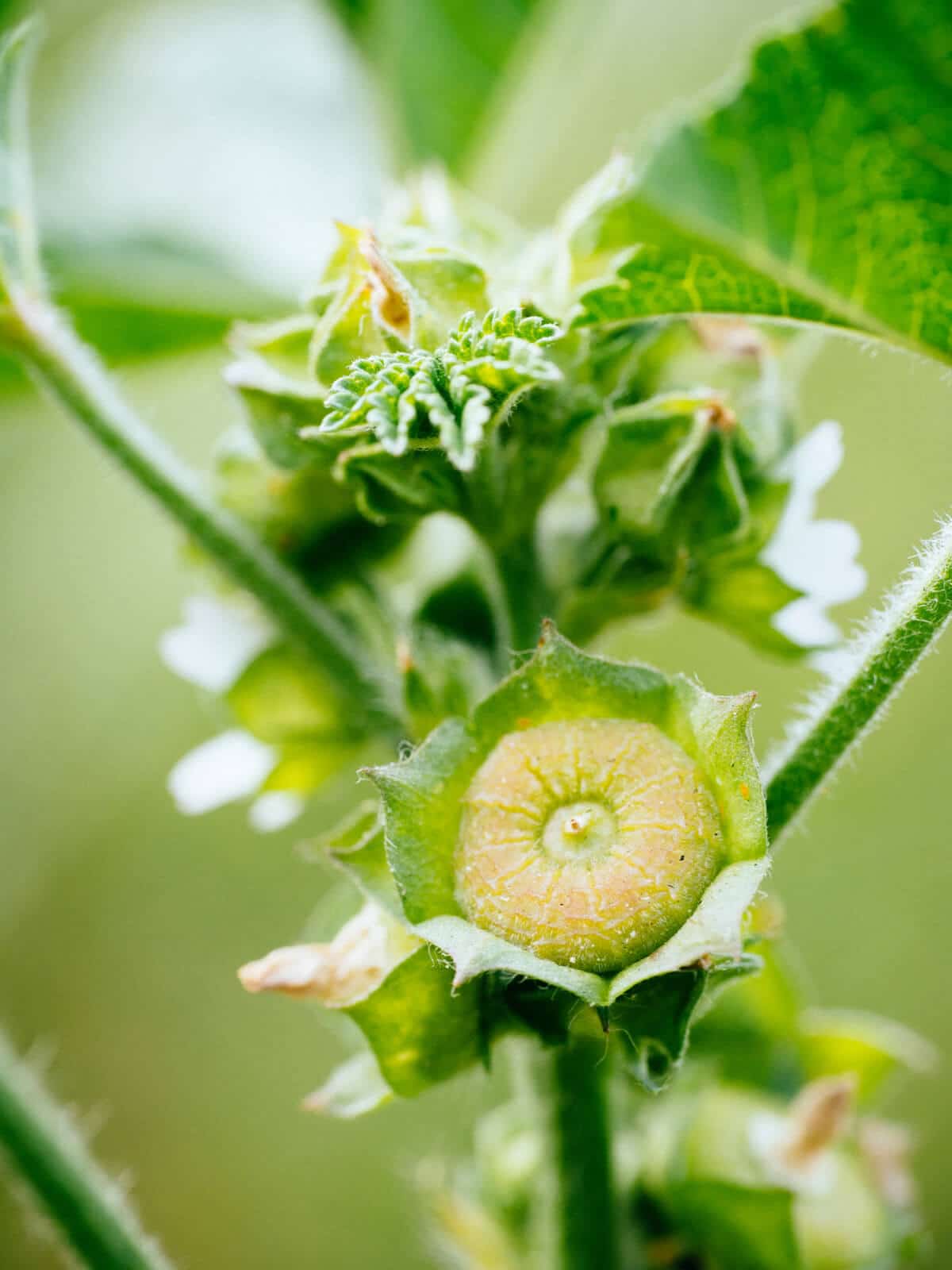
Mallow as a folk remedy… and a love potion?!
Mallow has a long history in holistic medicine, owing to the fact that the plant—in particular, its roots—has a substantial amount of mucilage (a sticky, jelly-like substance rich in protein and carbohydrates).
Mucilage is what gives mallow its anti-inflammatory properties. Historically, the herb has been used to heal digestive and urinary tract irritations, and even control coughs caused by inflammation.
It’s used in South African medicine as a topical poultice and infusion to heal wounds, and noted as a Native American folk remedy to treat swellings and sores. Modern herbal medicine commonly prescribes mallow as a healing agent for insect bites and swollen muscles.
But my favorite piece of mallow folklore? Its purported magical sexual powers.
In his book Natural History, Pliny the Elder asserted that mallow was an aphrodisiac, and when the seeds were sprinkled “for the treatment of women,” they stimulated sexual desire to “an infinite degree.” (Apparently, placing just three roots near the genitalia produced a similar effect as well.)
But how Pliny discovered this arousing fact is somewhat of a mystery…
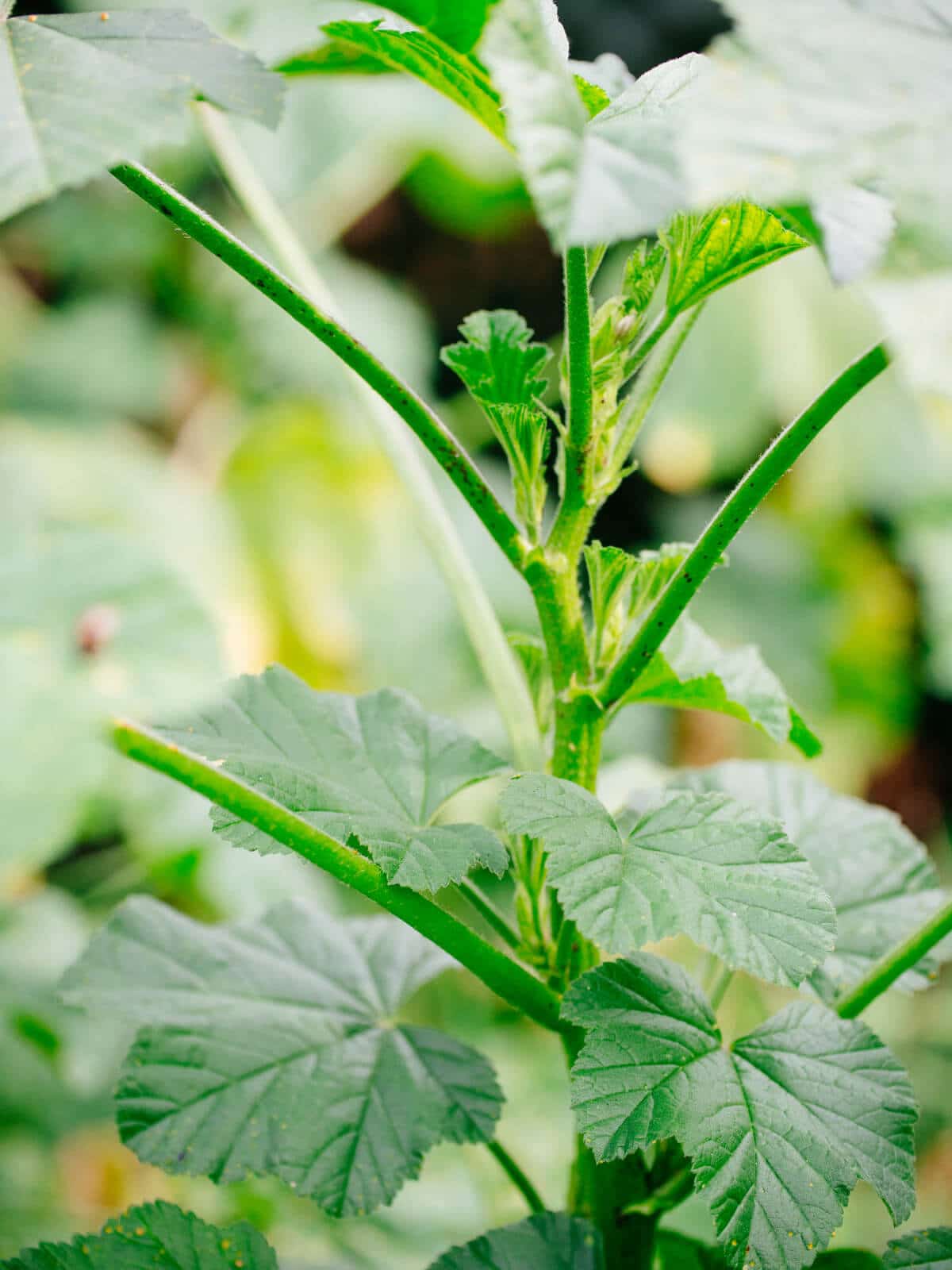
Can you eat mallow?
Mallow is indeed edible, but it isn’t the most exciting leafy green you can forage from your yard. It has a mild, almost nonexistent flavor, and that probably works to its advantage. Like tofu, it just takes on the flavor of everything else in your bowl.
So why would you eat it?
For starters, mallow is highly nutritious. The plant is exceptionally rich in vitamins A, B, and C, along with calcium, magnesium, and potassium. The tender young leaves actually have one of the highest amounts of vitamin A in any vegetable.
(Strange as it sounds, mallow should be thought of as a vegetable—and not a weed to be rid of.)
The leaves also have a mucilaginous quality, similar to okra, and can be used to thicken soups and stews. (I’m personally waiting for the next round of mallow to spring up in my garden so I can try it in my gumbo!)
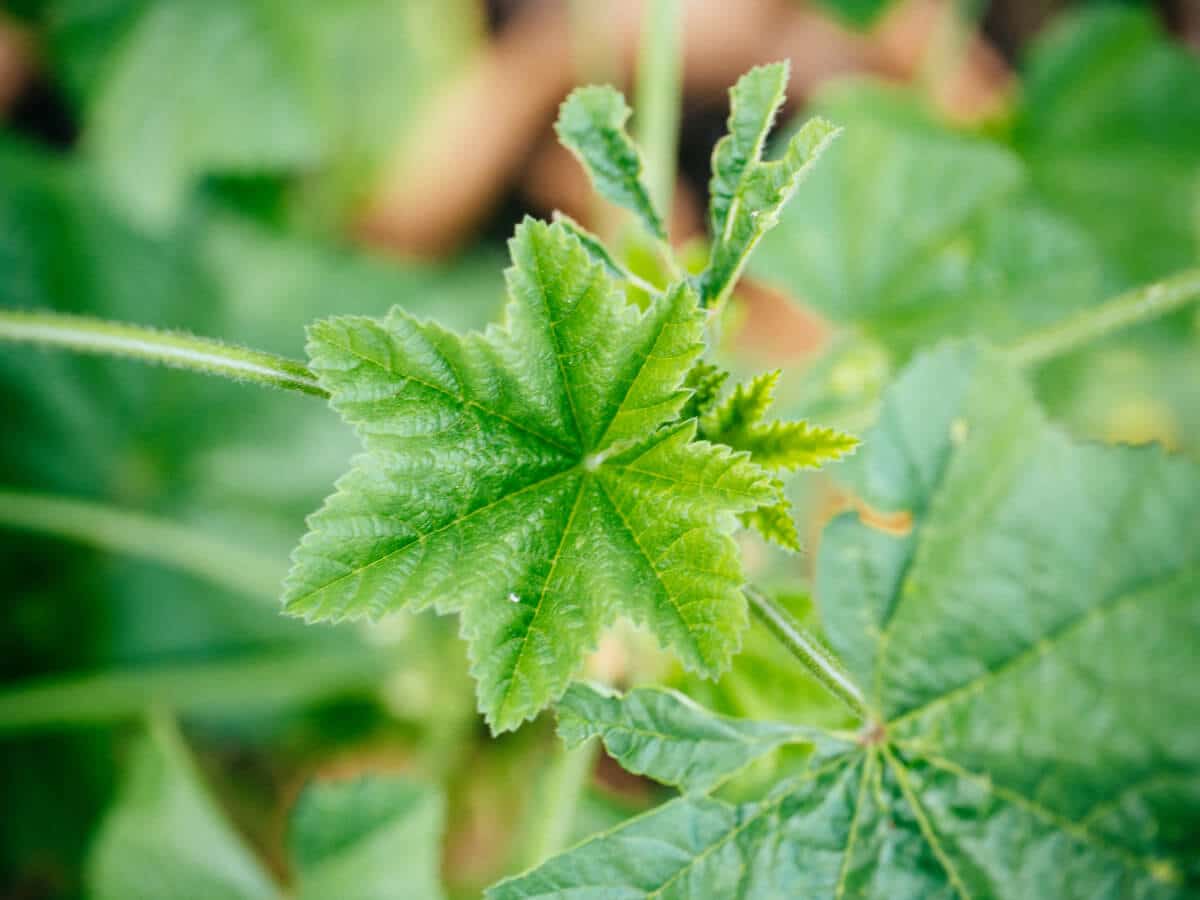
Mallow can be sauteed like most other greens, with oil, onion, and garlic, and maybe a splash of vinegar. You can fry the leaves in oil to make mallow chips, or even try baking them in the oven the way you’d make crispy kale chips.
When using the leaves raw, I like to mix mallow into a bed of other salad greens to counter that slight viscous texture. You can’t really tell once it’s dressed and tossed with your favorite salad accouterments—or you might even like it as-is in its raw, natural state.
The cheese heads are fresh and crisp and can be picked and eaten out of hand. (Though they don’t taste like cheese, in case you were wondering.)

Mallow is one of those miracle plants where the whole plant is edible—roots, stems, leaves, flowers, and fruits. I’ve only tried the last three (and only from my own backyard, where I was sure the plant hadn’t been trampled or peed on by passing dogs).
Related: 11 Vegetables You Grow That You Didn’t Know You Could Eat
The flowers have the same nondistinctive flavor as the leaves, while the fruits are pleasant and a little nutty (be sure to pick them when they’re still fresh and green).
I’ll admit that I don’t go out of my way to forage for mallow, but it’s fun to find in my garden because it’s essentially free food. I like to add a few leaves of this wild weed to a spring salad once in a while (along with my other favorite “weeds,” nasturtiums and dandelions).
That is, if my chickens don’t get to it first.

This post updated from an article that originally appeared on April 22, 2015.
View the Web Story on edible mallow weed.


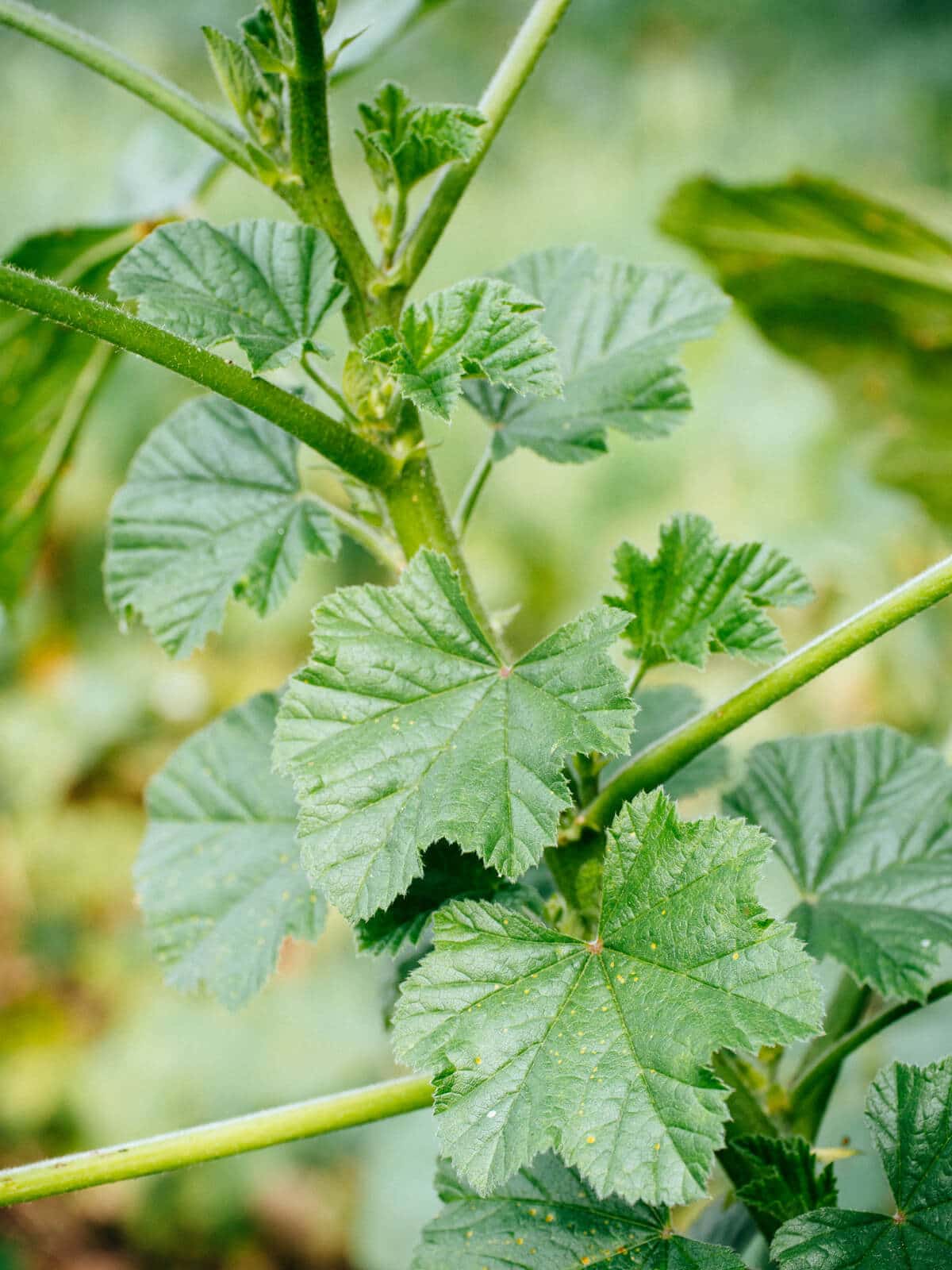
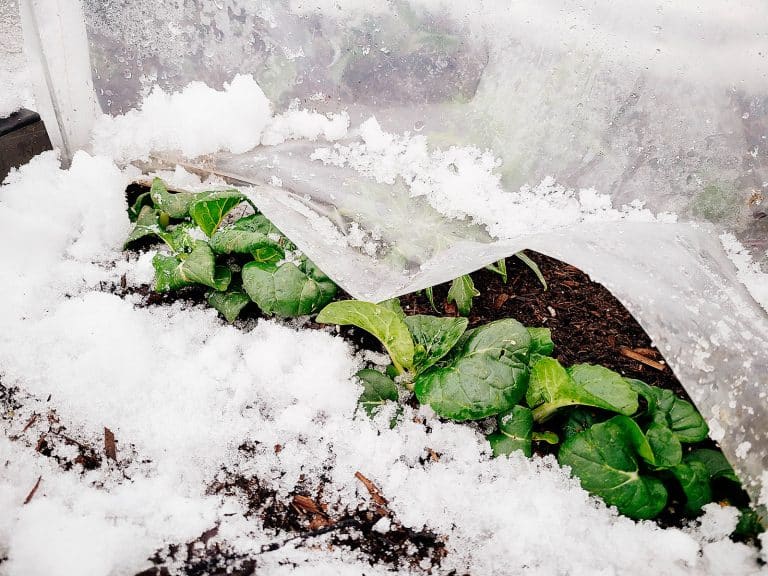
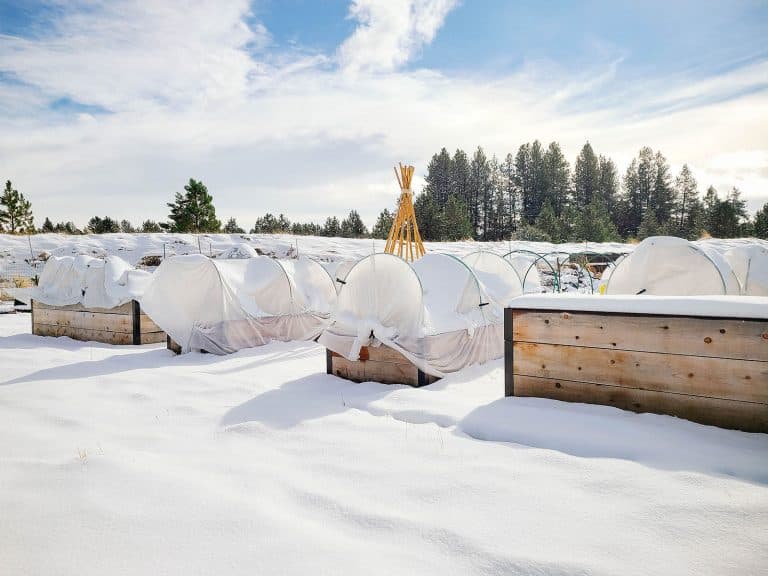
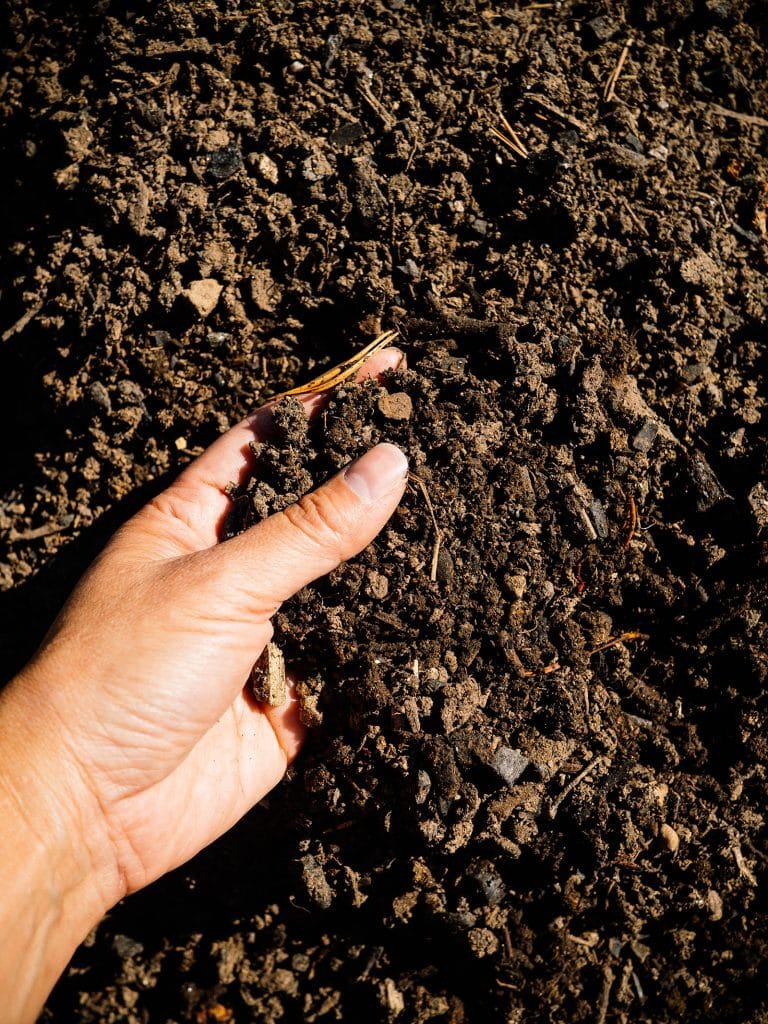
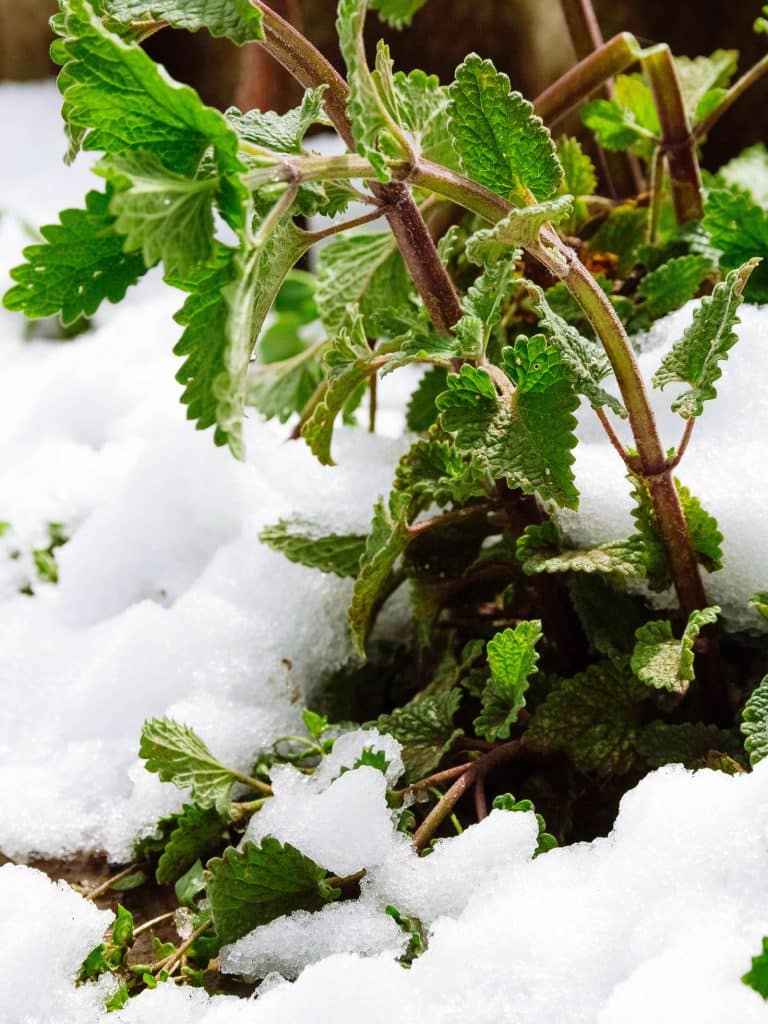




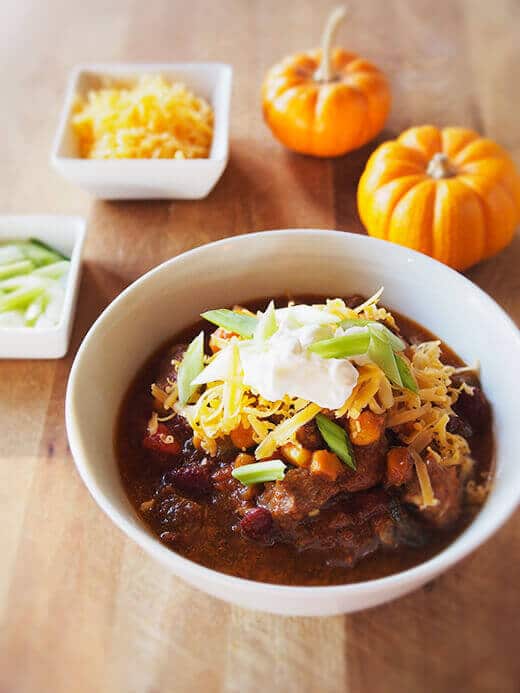

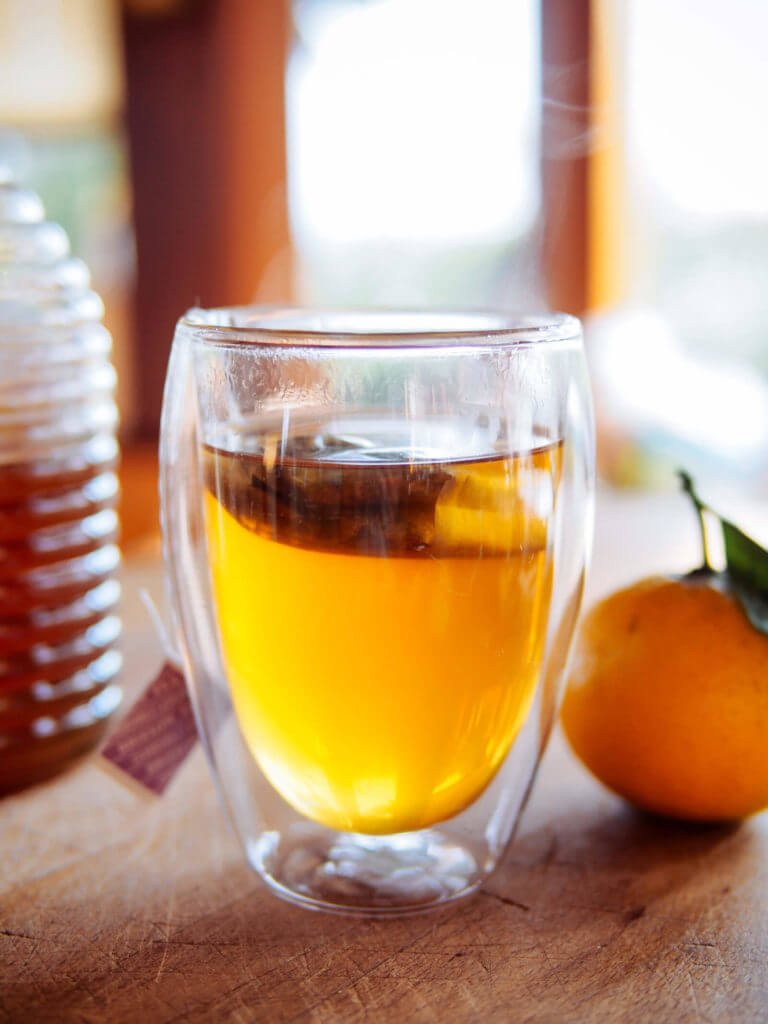


I have found that most invasive plants are medicinal and some are edible. I’ve eaten and tasted more “odd” stuff this summer. On Saturday, I harvest Oregon grape berries and made a curd with them and lemons that I fermented last year. Best dessert ever. But the “oddest“ was eating bull thistle and the heart of the flower bulb. This is an amazing lifestyle change and I wish I would have done it long ago. My pharmacy and grocery store is in my yard. 🙂 Hence why we’re told to spray and kill it all off. Thanks for the enjoyable and informative read.
Thanks for the article. The industries call these lesser herbs weeds, so that we will eradicate them & not have the food or nutrition that their mfg’d foods are devoid of. Blessings!
I actually bought this and planted on purpose in the city yard, due to flower beauty. Now am trying to decide whether to use it in a new Neighborhood Garden, or just toss
Do you know where I can order Mallow seeds? We had mallow salad in Morocco and loved it. Thank you for your help.
If you search for “Common Mallow Seeds” on eBay, you’ll find several auctions for them.
Hi Lynda, ty for your post. I have always eaten this plant since childhood. My grandmother told me it was good for the body. She was of Navajo/Apache and Spanish discent. I never questioned why, you just did. I never knew the name not did I ask what it was called. To me it was the wagon wheel plant. Not to long ago a friend of mine was complaining about a weed growing by her house. She must have thought I was crazy cause I started picking it and happily ate some of the fruits. I told her it was edible, my Nana said so. I told her if she wanted it gone I’d take it. She’s still thinking about it lol. It’s been 2 yrs now. Thank you for letting me FINALLY know it’s true name.
I have a ton in my yard, BUT, they didn’t grow wild there. I bought the original plant at a big box store. Is that variety the same? Is it sill safe to eat?
Thanks!
I have a marshmallow plant in my garden next to my little pond. The deer really enjoy it, I would rather they didn’t eat the whole plant but it always comes back strong. This year it was in full bloom before the deer found it.
This morning a doe who has very recently given birth to twins was munching away at the plant and wouldn’t stop even though my husband opened the door and asked her to leave. She has been coming into our country yard for several years now so she knows we are no threat. She ate the plant down to the ground, leaves, flowers, and stems. I wonder if there is some property of this plant that may help her with uterine involution or maybe milk production because she really stayed until she had eaten the whole thing rather than browsing and nibbling like they usually do. Do you have any thoughts or information about oxytocin or something similar in mallow plants?
There’s absolutely loads of this growing wild where I live. But all the leaves I’ve seen have lots of little holes in them, presumably from being nibbled by some kind of insect or caterpillar or whatever, and most plants have at least a couple of leaves with spots of orange fungus stuff on the underside (some googling tells me it’s known as ‘rust’). Does anyone know if it’s still safe to eat? Washed and cooked obviously; and I’d assume to avoid the leaves with the rust on them, but are the other leaves going to be ok? Or does the rust and/or the nibble holes mean it’s best avoided?
Actually, we now know that plants that have had to defend themselves produce more antioxidants which are good for us. Please check out some of Dr. Gundry’s videos…
I am always amazed by mallows. They are wonderful plants; they can be teeny tiny or taller than a person. I use the leaves in pasta sauces.
I bet mallow leaves would make a really nice, thick sauce.
Excellent article, as usual! You always teach me so much. Thank you, Lynda!
You’re welcome Cary!
Hello. Thank you for your very interesting and helpful article. I was wondering what this plant is that takes over my yard every spring here in Arizona. I would like to add a word of caution about this plant. According to the University of California ( http://ipm.ucanr.edu/PMG/WEEDS/little_mallow.html ) little mallow can concentrate nitrates to the point that it is poisonous to cattle. If someone needs to limit the nitrates in their diet, they may want to be aware of that.
Hello everyone;
where can I get seeds. I can’t seem to find the seeds anywhere.
Strictly Medicinal seeds is terrific and free shipping with spending 10 bucks. https://strictlymedicinalseeds.com/?s=Mallow&post_type=product&title=1&excerpt=1&content=1&categories=1&attributes=1&tags=1&sku=1&ixwps=1
Good question, I’m not sure. Mallow appears as a weed in my yard and self seeds every year.
I have always eaten the leaves , I particularly love the seeds, when I tell people I eat them they think they are inedible. They think I’m either lying or mad. They thicken soups I’ve not tried to fry the but I’ll try in a stir fry when I can find some. Since I have moved I don’t seem to have any now. I’m glad I saw this as I honestly thought I was the only person eating this .
Hi Michael, I grow them in my garden with my sunflowers and have collected many seeds. I would be happy to mail you some!
I’d love some seeds
Good to read!
Just had my first meal of round leaf mallow
chopped up and added to lightly browned onion in oil in a large pot. when lightly cooked added quite a bit of salt and some dried crushed chili peppers. Cook for another few minutes to rid of most water from washing. Awesome. Filling. Great with fresh squeezed lemon juice if you wish! Scoop up with fresh pita bread.
That sounds delicious! Thank you for sharing this simple recipe!
I am so glad to read this! I grew up eating the cheese wheels, our local Indian tribes told us that they were healthy, so as a little girl on a farm I use to eat them for fun. Now in my 30s I saw one of the plants and wondered if they were truly edible or if I had actually been poisoning myself. Glad to know I wasn’t haha!
Oh how funny!
Such an invasive weed. Almost impossible to get rid of in our flowerbeds in one area. I live in Oregon, my husband has used everything to kill it. In cracks too, gosh, they have super long, and tough roots!
Sometimes the medicine we most need is what is growing within 100 yards of us. We treat so many things as weeds, but with a change of perspective can embrace them as just another crop. These greens are often way more nutritious (and tenacious!) than what is found at the grocery store, often with a slew of other medicinal benefits (for instance, the mucilaginous quality of mallow drawn out from a cold infusion is wonderful for mucous membranes in dry or smoky weather, or for helping to heal leaky gut). I embrace my lamb’s quarter, dandelions, plantain, purslane and mallow, and I thin them out from spots where I don’t want them and harvest them at the same time.
Love your worldview! I agree, all these “weeds” end up being much more nutritious than grocery store greens, simply because they haven’t been messed with. It’s the same reason herbs have such antioxidant power too.
Yes they are an invasive weed here in Montana. Have to pull them and they have long tap roots. I hate them
Folks, take note that they can be invasive and are prolific at self seeding
Hence the term “weed.”
For certain, though we all know ‘weeds’ can be invasive in varying levels was my point.
Oh, fun. Thanks for sharing this. Just last summer we were teaching the toddling grandchildren to pick the fruits on this plant. My daughters used to eat them when they were little, too. The kids enjoy finding something in the garden that they can pick at will. I’m glad to know that they can eat the rest of the plant, too. I will have to try harvesting some along with dandelion leaves. I’ve always been concerned that the dandelions would be too strongly flavored so I’m glad to know that I also have an abundant source of a bland leaf to work into the salad.
My 1-year-old also loves to toddle around the garden, looking for things to pick and eat! It’s a blast watching her light up with all that joy and curiosity!
Dandelions tend to be milder when they’re young, so I recommend picking them when the leaves are super tender and only a few inches long.
Thank you so much for solving the mystery of the crazy plant that “ate” or maybe that should be “strangled” our volunteer tomato and is now trying to “eat” the back corner of our house! We’ve yet to try and eat the leaves but good to know we can give it a try.
I actually just wrote about dandelions today! http://gardenbetty.com/2017/04/defending-the-dandelion-its-not-just-another-weed/
THANK YOU for all the great info! While reading your article I had to chuckle as your Mallow looks like a li’l sister of the ‘Zebra Hollyhock’ I’ve been considering. The ones here in NoCO have faint pink or white blooms, just not near as pretty as yours I must say! 😉 I’ve been looking for info about the edibility of Mallows since learning it’s a cousin of Marshmallow & Hibiscus. So now when ‘weeding’ I’ll be hunting for these treats now. (I do however leave most of the dandelions alone though as they’re a 1st food source for the early emerging bees here, & the wild rabbits treat it as a delicacy.) <3 https://en.wikipedia.org/wiki/Malva
So thankful for your excellent photographs and clear explanations. These are lovely flowers worth pressing. Just discovered a new friend at a garage sale who had the lovely ‘zebra mallow’ along the side of her little house. Years ago she bought a planter arrangement for her mom and seeds just dispersed and have been producing ever since; and they neve tire of seeing their cheery little faces. I now have seed balls to grow my own, leaves and flowers to press, and plan to make a couple of bookmarks with these lovelies for the lady and her mother.
Thanks for this great article! I just had some mallow in a green smoothie today, and I look forward to eating more of it, since it seems to like my garden.
In Israel it is called “Chubeza” and my cousin an I would collect the leaves, tear them up, mix with egg, flour, chopped onions, salt and pepper. We made thin patties and fried them in a pan with some oil. They are delicious! Like leafy, crispy, potato pancakes.
That sounds delightful!
These leaves have been featured on the news channel 200 and 34 of HOT in Israel. You can see it as i24 TV at the end of the half-hour news program. This is shown as being a tasty dish, explained by an English speaking Moslem lady. Now I know their name in English. During the 1948 siege of Jerusalem, this food was the principle one that was able to sustain the people that were trapped there.
So interesting! Thank you for sharing that! How were the leaves prepared for eating on the news program?
It’s called cheeseweed, but it doesn’t taste like cheese. Mallow: The Everywhere Edible Weed http://t.co/tp1z7sOP1o < TY for RT! @sowandso
I love mallow. And enjoyed your article and beautiful pictures. I was lucky to come across this article while searching for a recipe to possibly ferment the little cheese wheels.
I love fermenting cranberries in honey and was wondering if anyone has tried it with the mallow fruit. I use mallow leaves and fruit in my herbal tea blend every day and oftentimes sweeten it with my fermented cranberries and honey. I recently notices when I was preparing to discard my pot of tea herbs how yummy the cheese wheels tasted after steeping a couple times with the other herbs. They still hold their shape and firmness.
I was considering if I should mix them with my cranberries next time I do a fermentation. And if there are any references to fermenting them you may have come across in your research.
Thank you!
Tammy Green
Hi Tammy, I was wondering if I can pick the seeds and dry them for using in tea during winter time? Did you ever come around using them in fermentation?
Emma
RT @theGardenBetty: The next time you weed, put it in a salad or use it to thicken stews. Mallow: The Everywhere Edible Weed http://t.co/Gx…
Thanks for this. I hadn’t thought about mallow in years. It grew wild in my yard in NM but with orange flowers.
You might know it as cheeseweed, and the moniker comes from its fruit. Mallow: The Everywhere Edible Weed http://t.co/8hyMRzd3lr #gardenchat
Found on roadsides and disdained in gardens, but it’s free food! Mallow: The Everywhere Edible Weed http://t.co/nHVOy2CKyp #gardenchat
RT @theGardenBetty: Did you know this common weed is actually edible from root to fruit? Mallow: The Everywhere Edible Weed http://t.co/VxC…
Mallow! We grow them as flowers. Now I need to run out and see if this is what is growing in front of the barn. You teach me something new every post!
I had no idea this was a mallow, nor that you could eat the whole plant. When I was a kid we called the little round, nutty fruits “bread and butters”….I have no idea why. My brother and I grazed like little goats all through the lawn searching for these treasures. I thought they were the yummiest treat all season.
RT @theGardenBetty: It’s sometimes called cheeseweed, but it doesn’t taste like cheese. Mallow: The Everywhere Edible Weed http://t.co/tp1z…
It’s sometimes called cheeseweed, but it doesn’t taste like cheese. Mallow: The Everywhere Edible Weed http://t.co/tp1z7sOP1o #gardenchat
RT @theGardenBetty: You might know this ubiquitous roadside plant as cheeseweed. Mallow: The Everywhere Edible Weed http://t.co/qWtxQimwLg
RT @theGardenBetty: You might know this ubiquitous roadside plant as cheeseweed. Mallow: The Everywhere Edible Weed http://t.co/qWtxQimwLg